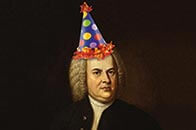Isaura String Quartet| 10-HR Bach Marathon | Union Station | Location C by Vignes St

ADDRESS
Union Station, 800 N. Alameda St., Los Angeles, CA, 90012, USADDRESS DETAILS
Union StationTIME
March 21, 201517:00:00 - 17:45:00
Add to Calendar
INSTRUMENT
string quartet
5:00pm-5:45pm at Union Station, Location C (East Portal by Metro Customer Service Center)
The Isaura String Quartet strives to promote traditional and contemporary chamber music through live performances, educational workshops, and collaborative projects with living composers and interdisciplinary artists. ISQ plays new and experimental music as well as works from traditional repertoire. All four members of ISQ are active performing musicians in Los Angeles with a variety of musical interests including tango, jazz, Irish fiddle, and bluegrass, which helps to create a unique perspective on the music they perform. They have had the pleasure of cultivating collaborative relationships with Los Angeles composers such as Anne LeBaron, Daniel Corral, Andreas Levisianos, and Mark Menzies. Previous performances include Claudio Valdés Kuri’s El Gallo for Radar L.A. Festival 2013, Time is a Sensual Object at Space Art Center, Anne LeBaron: Portrait Concerts at REDCAT. They recently performed the U.S. Premiere of Gloria Coates’ Quartet No. 9 and will perform the world premiere of her chamber opera Stolen Identity at REDCAT.
Inspired by Calvino’s Invisible Cities , the Isaura String Quartet takes its name from the “thin city” of Isaura, described as such: Isaura, city of the thousand wells, is said to rise over a deep, subterranean lake. On all sides, wherever the inhabitants dig long vertical holes in the ground, they succeed in drawing up water, as far as the city extends, and no farther. Its green border repeats the dark outline of the buried lake; an invisible landscape conditions the visible one; everything that moves in the sunlight is driven by the lapping wave enclosed beneath the rock’s calcareous sky. Consequently two forms of religion exist in Isaura. The city’s gods, according to some people, live in the depths, in the black lake that feeds the underground streams. According to others, the gods live in the buckets that rise, suspended from a cable, as they appear over the edge of the wells, in the revolving pulleys, in the windlasses of the norias, in the pump handles, in the blades of the windmills that draw the water up from the drillings, in the trestles that support the twisting probes, in the reservoirs perched on stilts over the roofs, in the slender arches of the aqueducts, in all the columns of water, the vertical pipes, the plungers, the drains, all the way up to the weathercocks that surmount the airy scaffolding of Isaura, a city that moves entirely upwards.